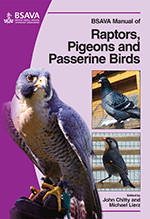
Full text loading...

Signs that may not be an emergency when described in a dog or cat could well be so in an avian patient. Simple written guidelines are the best means of ensuring that urgent cases are correctly prioritized, especially in large practices with several reception staff. This chapter assesses accepting an avian case; history and assessment of husbandry; clinical examination; physical examination; triage and emergency medicine; fluid therapy; stabilization and further examination; and hospitalization.
Examination, triage and hospitalization, Page 1 of 1
< Previous page | Next page > /docserver/preview/fulltext/10.22233/9781910443101/9781910443101.7-1.gif

Full text loading...














